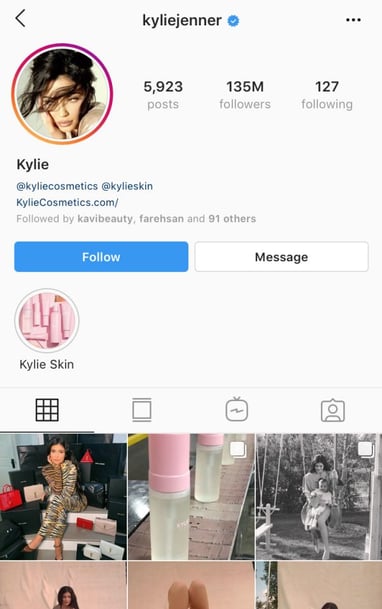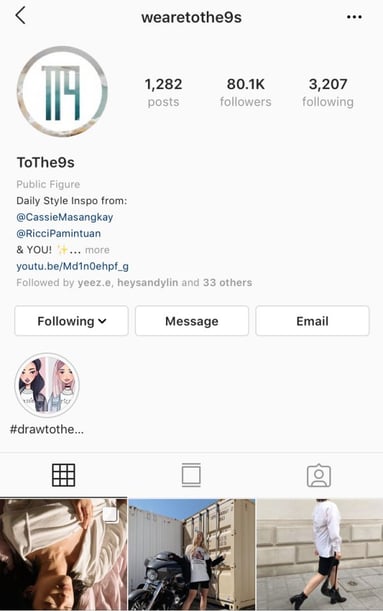Influencer marketing has become an extremely effective way for businesses to promote their brand, products and/or services. In 2019, influencer marketing is not only maintaining its foothold – it’s continuing to grow. What is influencer marketing? In a nutshell, it’s when a business collaborates or partners with an influential person (or people) to promote something. It could be for a new product launch, a specific marketing campaign, a particular service, you name it.

Over the years, Instagram has become one of the most popular platforms for influencer marketing. With over 1 billion users and a fast-growing network of influencers churning out millions of sponsored posts each year, Instagram has become the most important influencer marketing channel. With that, the word “influencer” has become a rather loose term. There are so many people on Instagram referring to themselves as influencers, but what does that really mean? At the surface, it seems as though an influencer’s total number of followers matter the most. However, as a business, there’s so much more you have to consider when coming up with an influencer marketing strategy. What can influencers do for your brand? Does their brand align with yours? What kind of relationship do they have with their followers? How do you find the right influencers? How much will it cost? These are all important questions to consider.
Since there are many facets of influencer marketing, we will focus mainly on the topic of micro-influencers in this blog post.
What are micro-influencers?
Later describes micro-influencers as people who have a significant, but not massive, social media following. This number is subjective and can range from anywhere between 10,000 to 500,000 followers. The exact number usually depends on who you talk to and the influencer market you are targeting. Micro-influencers have specific niche audiences that are deeply engaged and connected to them. Whether you’re a beauty, fitness, fashion, lifestyle, wellness, food or travel brand, there is probably a large pool of micro-influencers available to reach out to.

What sets micro-influencers apart from macro-influencers?
For starters, major social media influencers (or macro-influencers) have attained some sort of “celebrity status”. These types of influencers often have hundreds of thousands (or even millions) of followers, and it probably costs an arm and a leg just to have them promote or endorse a brand’s product or service. These types of influencers also tend to lead more lavish lifestyles than your average consumer. Some extreme and notable examples of influencers that fall into this bubble are the Jenners and Kardashians.

On the other hand, micro-influencers are much more like your everyday consumer. Although the criteria of who qualifies as a micro-influencer remains very subjective, they are overall more relatable and personable to their niche audience. If they were to recommend a product or service, it may seem more like a trusted recommendation from a friend rather than a celebrity endorsement.

What can micro-influencers do for your brand?
Micro-influencers can be extremely valuable for your brand because they’ve already built a strong following. They’ve established a certain level of trust and a relationship with their followers through their personal brand. As a marketer, collaborating with micro-influencers can help you cast a wider net to increase your brand visibility. Here’s how:
Micro-influencers can help expand your reach. Whether you want to promote a campaign for your business or promote a new product/service, working with a group of micro-influencers can help you reach a wider audience. They can promote your brand using videos that will help ignite your marketing campaigns or other types of content. It’s also more important than ever before to understand the importance of using Instagram Stories for business, especially when it comes to influencer marketing.

Micro-influencers can help you build lasting relationships. Working with micro-influencers can help you build lasting relationships with their followers. Studies have shown that influencers with a smaller following have a much higher engagement rate than top-tier influencers. Rather than just tagging your business or brand in a post, micro-influencers are more likely to give honest opinions and reviews on your product. Also, working with the same influencers repeatedly also increases the legitimacy of the relationship with the brand both for themselves and for their followers.
Working with micro-influencers can give you a higher ROI. Rather than spending your entire influencer marketing budget on a macro-influencer celebrity to promote your business or brand, investing in collaborations with a group of micro-influencers can help you get more bang for your buck! This is definitely a great way to optimize your marketing spend.
How do you find micro-influencers?
Now that you have a general idea of who micro-influencers are and what they can do for your plan, now comes finding the right micro-influencers for your influencer marketing strategy. Here are a few key considerations to keep top of mind:
-
- Make sure they are relevant to your brand. Will they do a good job representing my brand? Do their values align with our brand and business values? Make sure to do your research beforehand and ask yourself these questions. Targeting the wrong micro-influencers will result in a very low ROI.
- Engage with them and show appreciation for their content. Realistically, you’ve got to know why you are reaching out to specific micro-influencers. Get to know them before reaching out to see if they’re a good fit for your marketing strategy. Engage with them and show some appreciation for their content to get a feel for how they interact with their audience. This can help you determine whether or not they are a good fit for your brand.

- Look for micro-influencer fans. Conduct an Instagram search to find content that may contain your brand. Follow branded hashtags and there’s a possibility that micro-influencers may already be a part of your brand’s fanbase. For example, many micro-influencers in the beauty industry are constantly promoting and tagging different brands’ products. They name drop brands all the time when doing reviews, sharing their makeup and skincare routines. And not all of these posts are sponsored or in collaboration with those brands. Beauty companies like Glossier see this as a unique opportunity to approach these types of micro-influencers because they know they are already an ambassador for their line of products. They are essentially shouting out for collaboration!
The Current Challenge
Earlier this month, Instagram rolled out a new feature in Canada, hiding the number of likes on users’ posts. This experiment to make the number of likes appear less prominent on Instagram feeds and profiles aims to shift the focus from a “popularity contest” to the authenticity and quality of content. This is only a test market, so there is no news about any changes coming to Europe, but it will be interesting to see if or how this impacts influencer marketing.
BigCommerce states that 65% of influencer marketing budgets will increase in 2019, so there is still time for you to make it part of your marketing strategy.

Stay Connected